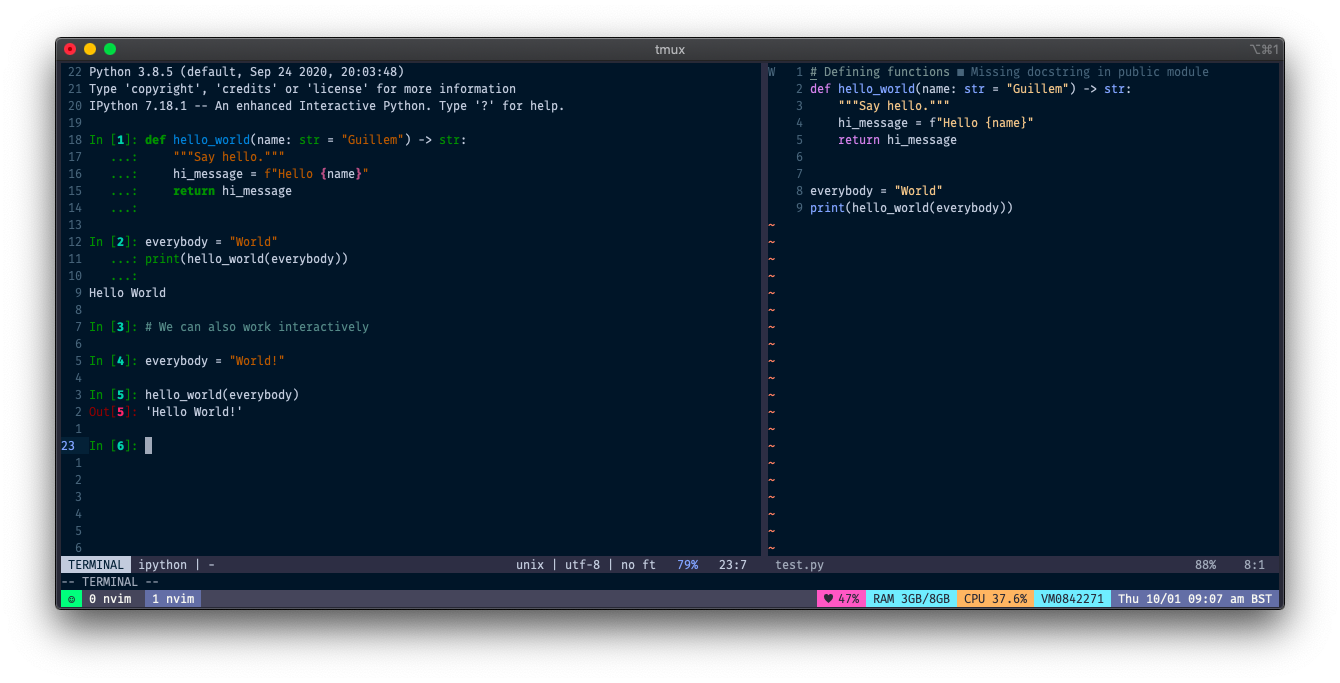NeoVim Notebooks
This setup has been largely superseeded by my Notebook Navigator plugin. It makes it easier to interact with code cells directly in nvim and send them to an REPL. Check it out and leave a ⭐!
I have reached Vim nirvana with my latest setup. I can finally bring all the advantages of working within Jupyter to my favorite text editor. You get the code cells and interactive development with a fine-tuned editor and plain text files which can be put through linters and code formatters. Lo and behold:
As easy to navigate and execute as the Jupyter interface but with a real editor behind. I can't ask for more.
This setup is powered by the following plugins:
Of course, I use a bunch of other plugins for linting, autocompletion, code navigation... If you are interested on those you can find my init.vim here.
Jupytext

Manipulating raw ipynb files is difficult and unergonomic. Tools such as notedown and jupytext make it possible to transform ipynb files to and from a plain text representation. To automate the process I use the jupytext.vim plugin. It will open the notebook and load it into the buffer as a python script. On save, it will do the roundtrip back to an ipynb for you. Very handy!.
I actually use my own fork of jupytext.vim because we need to be able to specify the output format. As soon as the pull request gets merged I'll get rid of this comment. In the meantime if you want to reproduce the setup you'll have to use GCBallesteros/jupytext.vim.
Iron.nvim
Connecting nvim with IPython couldn't be easier than using iron.nvim. It also supports many other REPLs so no matter what your language of choice it will have you covered.

You can either send text to the REPL via a motion/text object or through a visual selection.
vim-textobj-hydrogen
The final ingredient was to have (n)vim understand code cells. I couldn't find
any off-the-shelf solution but developing my own plugin wasn't too hard by
building atop the excellent
vim-textobj-user. The result is
vim-textobj-hydrogen.
It introduces two text objects, ih and ah, that correspond to cells defined
in the hydrogen format. I also included two motions, ]h and [h, to quickly
move across cells.
Configuration
Below is all you will need to add to your nvim configuration. The only part
that may require some explanation is the mapping for ]x. We start by using
the IronRepl defaul map to send a motion into the REPL, i.e. ctr. Then we
follow that with the text object defined in vim-textobj-hydrogen, ih and
finally we run a search to reach the beginning of the next cell, /^# %%. The
double <CR> turns off the highlighting that was started by the search.
Edit: To set ipython as the default REPL for python you will need to create a
file plugins.lua in the same folder where init.vim is with the
following contents:
Thanks for reading!